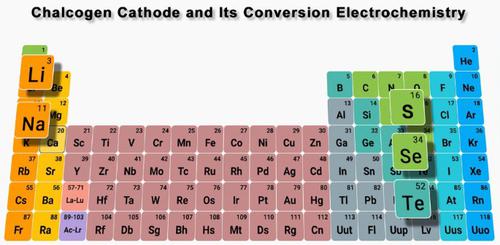Science China Chemistry ( IF 10.4 ) Pub Date : 2020-08-26 , DOI: 10.1007/s11426-020-9845-5 Ya-Hui Wang , Xue-Ting Li , Wen-Peng Wang , Hui-Juan Yan , Sen Xin , Yu-Guo Guo

|
Chalcogen elements, such as sulfur (S), selenium (Se), tellurium (Te) and the interchalcogen compounds, have been studied extensively as cathode materials for the next-generation rechargeable lithium/sodium (Li/Na) batteries. The high energy output of the Li/Na-chalcogen battery originates from the two-electron conversion reaction between chalcogen cathode and alkali metal anode, through which both electrodes are able to deliver high theoretical capacities. The reaction also leads to parasitic reactions that deteriorate the chemical environment in the battery, and different cathode-anode combinations show their own features. In this article, we intend to discuss the fundamental conversion electrochemistry between chalcogen elements and alkali metals and its potential influence, either positive or negative, on the performance of batteries. The strategies to improve the conversion electrochemistry of chalcogen cathode are also reviewed to offer insights into the reasonable design of rechargeable Li/Na-chalcogen batteries.
中文翻译:

锂离子/锂离子电池中硫族元素阴极及其转化电化学
硫属元素,例如硫(S),硒(Se),碲(Te)和硫族元素间化合物,已被广泛研究作为下一代可再充电锂/钠(Li / Na)电池的正极材料。锂/钠硫属元素电池的高能量输出源于硫属元素阴极与碱金属阳极之间的双电子转化反应,两个电极都可以通过此反应提供较高的理论容量。该反应还导致寄生反应,使电池中的化学环境恶化,并且不同的阴极-阳极组合显示出自己的特征。在本文中,我们打算讨论硫族元素与碱金属之间的基本转化电化学及其对电池性能的正或负影响。










































 京公网安备 11010802027423号
京公网安备 11010802027423号